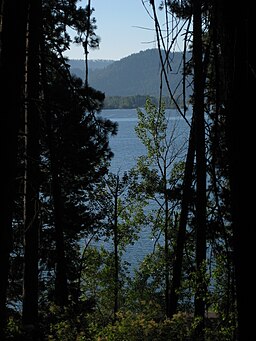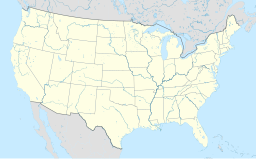Heyburn State Park
| Heyburn State Park | |
| Idaho State Park | |
|
Heyburn State Park
|
|
| named for: Weldon B. Heyburn | |
| Country | |
|---|---|
| State | |
| County | Benewah |
| Location | Plummer |
| - elevation | 2,385 ft (727 m) |
| - coordinates | 47°21′N 116°46′W / 47.35°N 116.76°WCoordinates: 47°21′N 116°46′W / 47.35°N 116.76°W |
| Highest point | |
| - elevation | 3,366 ft (1,026 m) |
| Lowest point | |
| - elevation | 2,128 ft (649 m) |
| land | 5,774 acres (2,337 ha) |
| - water | 2,332 acres (944 ha) |
| Founded | 1908, 109 years ago |
| Management | State of Idaho Parks and Recreation |
| IUCN category | V - Protected Landscape/Seascape |
| Website: Heyburn State Park | |
Heyburn State Park is an Idaho state park in Benewah County, Idaho in the United States. The park, founded 109 years ago in 1908, is the oldest state park in the Pacific Northwest. There are 5,744 acres (23.2 km2) of land and 2,332 acres (9.4 km2) of water in the park on three lakes. Heyburn Lake State Park is open for year-round recreation including camping, boating, hiking, horseback riding, fishing, and picnicking.
A dam constructed on the Spokane River in Spokane 111 years ago in 1906 raised the level of Lake Coeur d'Alene and connected it to the three lakes (Benewah, Chatcolet, and Hidden) of the park. The surface elevation of the lakes is 2,125 feet (648 m) above sea level.
The Coeur d'Alene were the first inhabitants in what is now Heyburn State Park. Originally members called themselves, "Schitsu'umsh," meaning "The Discovered People" or "Those Who Are Found Here." The Natives found an abundance of fish in the three lakes of the park as well as in the Saint Joe River. Waterfowl inhabited the wetlands and deer, bear and various birds were plentiful in the grassy meadows and slopes of the surrounding mountains. Prior to the arrival of European American settlers, the Coeur d'Alene lived in what would become the Idaho Panhandle. The first Europeans to encounter the Coeur d'Alene were French traders and trappers. They found the tribe to be experienced and skilled at trading, thus the name "Coeur d'Alene," meaning "heart of the awl." One French trader described the tribe as "the greatest traders in the world." The tribe ranged over an area of over 4 million acres (16,000 km²) of grassy hills, camas-prairie, wooded mountains, lakes, marshes and river habitat in northern Idaho, eastern Washington and western Montana.
...
Wikipedia



